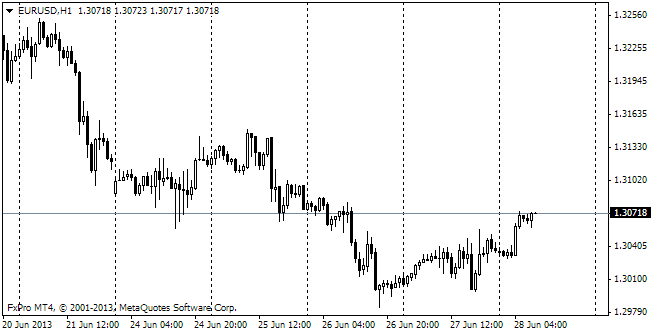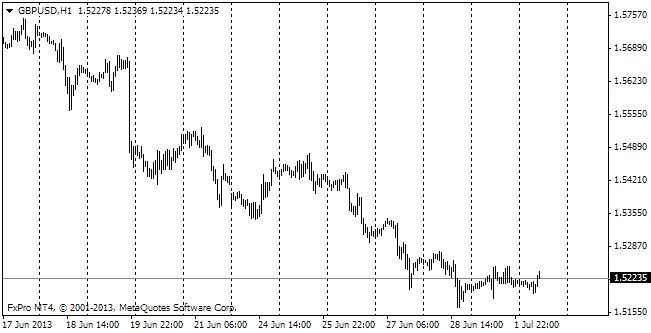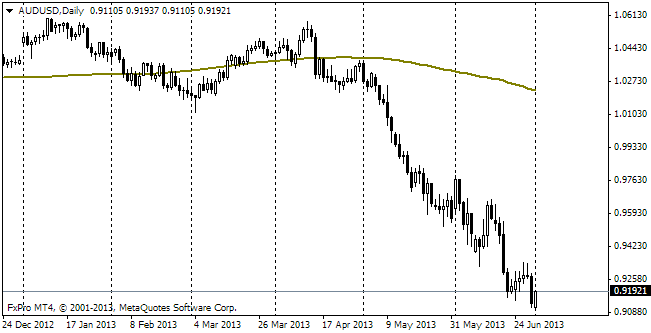EUR/usd
Yesterday the stock markets suffered a hard blow. The worn-out exchanges of the developing countries were knocked down. Most of them lost more than 2% over the day. Now we have quite an unpleasant situation on hand. The US Fed ignored the warning signals of the slowdown in the business activity and cut the QE programme last week. Thus, the markets are now sure that the only thing which can prevent the Fed from taking a similar step in the future is utterly disappointing statistics from the USA. Against this background the US investors, anticipating further cuts, very painfully reacted to the sharp decline of ISM Manufacturing PMI from 56.5 (revised down from 57.0) to 51.3. The index still indicates growth, staying above 50, but also shows that the growth rate is quite small. It's rather unpleasant news as manufacturing activity is kind of leading indicator for business activity. Besides, such low rates also dispel the doubts about ability of manufacture to become a driver of economic growth. The best the US economy can hope for is decrease in the trade deficit due to bigger energy production inside the country. Well, let's digress from global issues. Yesterday's heavy selling in the stock exchanges gave rise to demand for the single currency, which managed to appreciate even against the dollar. It confirms that the euro has acquired the status of a safety currency. At this stage the currencies which are more than others prone to growth include the yen, euro, franc and dollar (in the descending order of exposure to influence).

GBP/USD
We could possibly rate the sterling among safety assets as the country keeps showing positive growth rates and is also a financial hub of asset allocation to Europe and other countries. But the pound has been under constant pressure since yesterday. It has lost almost two figures since the end of the previous week. And since the high set on January 24 the losses have made 4 figures. The Manufacturing PMI, published yesterday, can hardly be seriously called disappointing. But we should understand that its actual rate (56.7) has fallen short of expectations (57.1), which triggered decline of the pound. Today we have Construction PMI on the agenda and tomorrow we will get the same index for the services sector. Analysts cling to the opinion that the breathtaking growth rates will persist. It is easy not to meet such high expectations.

USD/JPY
The hopes for a reversal in usdjpy don't seem to come true. The pair still can't feel the bottom and have tumbled already below 101. If stock exchanges remain under pressure in the coming days, the bears may target the 200-day MA, which is now at 100. Technically, there are hopes for a pullback since the stock exchanges are oversold. And fundamentally, for that we'll need strong stats from the USA, for which there is a lack now.

AUD/USD
The aussie has shot up by about 80 pips on the release of the RBA's rate decision. The rate itself, as expected, was kept unchanged. However the tone of comments has changed. The Bank already points out that the current rate will help to reach balanced growth. Earlier the rate of the Australian dollar was called uncomfortably high. It will help the Aussie make up for its losses in the crosses. Yet, the scale of growth against USD is still open to question.
